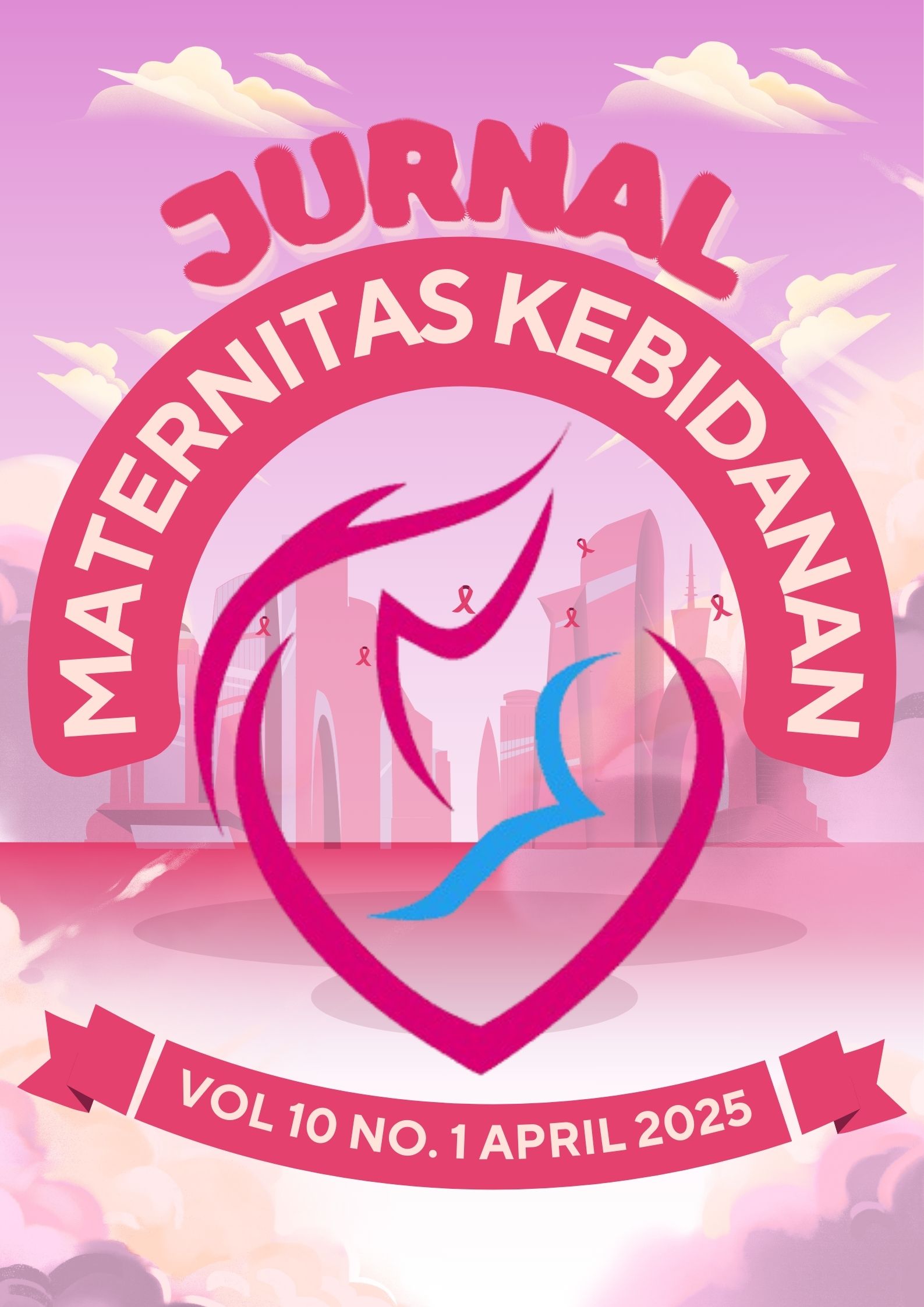Factors Related To Vaginal Discharge In Female Teenagers At SMAS Pab 6 Helvetia, Deli Serdang District
##plugins.themes.academic_pro.article.main##
Abstract
According to the World Health Organization (WHO), every year teenagers experience sexually transmitted diseases (STDs) with symptoms of vaginal discharge increasing by 5%. Even in the United States, the occurrence of vaginal discharge in teenage girls continues to increase from year to year. The existence of this problem requires prevention. While European women in 2013 as many as 739,004,470 people and experienced vaginal discharge by 25%. The problem behind this study is the occurrence of vaginal discharge which is often complained of by teenage girls. Factors suspected of being related to vaginal discharge are personal hygiene, stress, and the use of vaginal cleansers. Purpose: This study aims to determine the factors related to vaginal discharge in teenage girls. Method: This study is an analytical survey study (explanatory research) with a cross-sectional approach. The study was conducted at SMAS PAB 6 HELVETIA. The study population was 32 teenage girls, and all of them were used as samples (total sampling). The data were analyzed using the Chi-Square test at a 95% confidence level ( = 0.05). Results: Based on the results of the study, it was shown that the factors related to vaginal discharge in female adolescents at SMAS PAB 6 HELVETIA were personal hygiene with a fairly strong correlation (p = 0.006); stress with a fairly strong correlation (p = 0.018); use of vaginal cleansers with a fairly strong correlation (p = 0.006). The occurrence of vaginal discharge in adolescent girls is influenced by personal hygiene, stress, and the use of vaginal cleansers. SMAS PAB 6 HELVETIA Medan can provide appropriate education about personal hygiene to female students, prevent stress, and the proper use of vaginal cleansers.
##plugins.themes.academic_pro.article.details##

This work is licensed under a Creative Commons Attribution-ShareAlike 4.0 International License.
References
- Munthe DP, Manoppo JE. The Relationship between Knowledge and Attitude of Adolescent Girls with Prevention of Leucorrhea at SMAN 2 Tondano. J Kesehat Masy. 2020;6(3):142–50.
- Nurhasanah D, Wijayanti T. The Relationship between Pantyliner Use Behavior and the Incidence of Flour Albus in Adolescent Girls at the Al-Masyhuriyah Bukit Raya Islamic Boarding School, Tenggarong Seberang District. J Borneo Student Res. 2019;2(1):531–536.
- Prabawati. Factors Related to Preventive Behavior of Adolescent Leucorrhea at SMK YPPK 2 Sleman. 2019;
- Azizah N. Characteristics of Adolescent Girls with Vaginal Discharge at Muhammadiyah Vocational High School. Kudus. J JIKK. 2019;
- Health Office of North Sumatra Province. Health Profile of North Sumatra Province in 2020. Medan: Health Office of North Sumatra Province; 2021.
- Oriza N, Yulianty R. Factors Related to the Incidence of Vaginal Discharge in Adolescent Girls at SMA Darussalam Medan. J Community Midwife. 2018;1(3):142–51.
- Batubara AR, Rahmayani. Factors Associated with the Incidence of Vaginal Discharge (Flour Albus) in Adolescent Girls at the Al-Zahrah Bireuen Modern Islamic Boarding School. J Heal Technol Med. 2022;8(2):1435–46.
- Herdayani Y. Factors Associated with the Incidence of Vaginal Discharge in Adolescent Girls. Call For Paper National Midwifery Seminar; 2021.
- Aryani. Adolescent Health Problems and Solutions. 2nd edition. Jakarta: Salemba Medika; 2021.
- Suminar ER, Sari VM, Magasida D, Nurfita NR, Agustiani AR. Vaginal Discharge in Adolescents. 1st edition. Jakarta: K Media; 2022.
- Marwati. Adolescent Knowledge about Vaginal Discharge and Personal Hygiene with the Incident of Vaginal Discharge at SMA Negeri 2 Kendari. 2019;6(4):1–9.
- Munawar A, Nudhudhariana R. The Relationship Between Knowledge About Personal Hygiene and Preventive Behavior of Leucorrhea in Adolescent Girls at SMAN 15 Semarang. 11. Johar. Perception and Efforts to Prevent Leucorrhea in Adolescent Girls at SMA Muhammadiyah 1 Semarang. 2019;
- Kurniawati. I. The Relationship Between Knowledge and Personal Hygiene and the Incidence of Vaginal Discharge in Class X1 Students at SMA N Sentulo. Yogyakarta. J Nursing. 2019;
- Nurlaila M. The Relationship Between Knowledge and Personal Hygiene and the Incidence of Vaginal Discharge in Adolescent Girls. J Nursing. 2019;11(1).
- Abidin EZ et al. There is a significant relationship between personal hygiene and the occurrence of vaginal discharge in adolescent girls. J Int J Adolesc Youth. 2017;22(2):162–70.
- Darma M. The Relationship between Knowledge, Vulva Hygiene, Stress, and Diet with the Incidence of Flour Albus Infection (Vaginal Discharge) in Female Students of SMA Negeri 6 Kendari. 2017;2(6):1–9.
- Hadi AO. Relationship of Stress Levels with the Incidence of Fluor Albus in Adolescent Girls. Department of Midwifery, Kendari Health Polytechnic, Ministry of Health of the Republic of Indonesia; 2020.
- Isecmi S. Pregnancy, Childbirth and Postpartum Complete with Pathology. Yogyakarta: Nuha Medika; 2019.
- Olaolorun FM, Lawoyin TO, Sule-Odu AO. Vaginal douching practices among Nigerian women. Afr J Reprod Health. 2016;20(4):86–93.
- Tamrakar R, Yadav U, Sharma A, Chhetri R. Vaginal douching practices among reproductive age women in a peri-urban area of Kathmandu, Nepal. J Nepal Med Assoc. 2017;46(167):5–10.
- Brotman RM, Ghanem KG, Klebanoff MA, Taha TE, Scharfstein DO, Zenilman JM, et al. The effect of vaginal douching cessation on bacterial vaginosis: a pilot study. Am J Obstet Gynecol. 2018;98(6):628.e1-628.e7.

